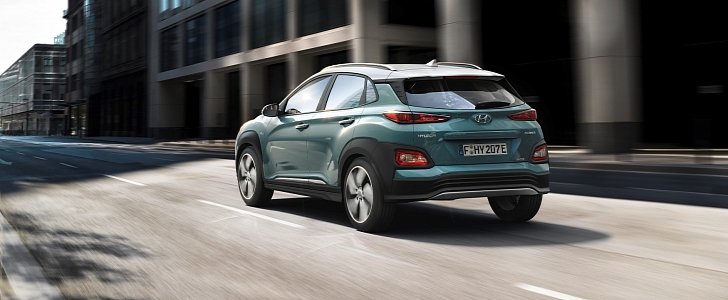At 258 miles of range from a full charge of the 64-kWh battery, the 2019 Hyundai Kona Electric is nothing to scoff at. In fact, the subcompact-sized crossover is better than the Chevrolet Bolt (238 miles) in terms of miles per gallon gasoline equivalent as well (120 compared to 119 MPGe).
The impressive efficiency of the Kona Electric is a testament to how serious Hyundai is when it comes to electric vehicles. What it is most impressive is that the Fiat 500e has a range three times shorter than that of the South Korean interloper. The ever-popular Nissan Leaf, meanwhile, travels 107 miles less than the Kona Electric.
As for the biggest unknown regarding the U.S. specification of the Hyundai, we don’t know the starting price. Adding intrigue to the mystery, the 64-kWh option is certainly more expensive than the 39.2-kWh battery that comes standard.
From a Level 2 charging station, the Kona Electric needs 9 hours and 35 minutes to recharge from empty to full. Level up to Level 3, and the time is reduced to just under an hour.
With 201 horsepower (204 PS) and 291 pound-feet (395 Nm) of torque at its disposal, the front-wheel-drive model can’t be called a slouch either. But on the other hand, don’t forget that Hyundai developed the Kona Electric to be as efficient as possible, not quick off the line.
With the 64-kWh battery, the Kona in Electric flavor needs 7.6 seconds to hit 62 mph (100 km/h). Downgrade to the 39.2-kWh battery, and you’re looking at 9.3 seconds and a driving range in the neighborhood of 186 miles (300 kilometers).
The entry-level version of the Kona Electric also happens to be down on output, rated at 133 horsepower (135 PS) and the same kind of torque as the long-range model. Currently available in South Korea and Norway, the newcomer will arrive in North America by the end of the year.
Turning our attention back to pricing, the Kona Electric 39.2 kWh should start in the low $30,000s. Step up to the 64-kWh battery pack, and you’re looking at approximately $40,000 before taking into consideration the federal tax credit of $7,500.
As for the biggest unknown regarding the U.S. specification of the Hyundai, we don’t know the starting price. Adding intrigue to the mystery, the 64-kWh option is certainly more expensive than the 39.2-kWh battery that comes standard.
From a Level 2 charging station, the Kona Electric needs 9 hours and 35 minutes to recharge from empty to full. Level up to Level 3, and the time is reduced to just under an hour.
With 201 horsepower (204 PS) and 291 pound-feet (395 Nm) of torque at its disposal, the front-wheel-drive model can’t be called a slouch either. But on the other hand, don’t forget that Hyundai developed the Kona Electric to be as efficient as possible, not quick off the line.
With the 64-kWh battery, the Kona in Electric flavor needs 7.6 seconds to hit 62 mph (100 km/h). Downgrade to the 39.2-kWh battery, and you’re looking at 9.3 seconds and a driving range in the neighborhood of 186 miles (300 kilometers).
The entry-level version of the Kona Electric also happens to be down on output, rated at 133 horsepower (135 PS) and the same kind of torque as the long-range model. Currently available in South Korea and Norway, the newcomer will arrive in North America by the end of the year.
Turning our attention back to pricing, the Kona Electric 39.2 kWh should start in the low $30,000s. Step up to the 64-kWh battery pack, and you’re looking at approximately $40,000 before taking into consideration the federal tax credit of $7,500.




















